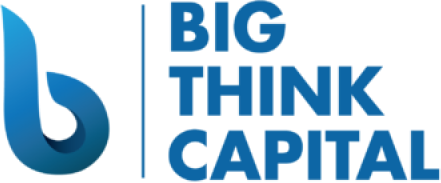Navigating the 2025 Inflation Trends: Strategies for Small Businesses to Offset Rising Interest Rates and Price Increases
Estimated reading time: 5 minutes
- Understanding current inflation trends and their impact on costs.
- Implications of rising interest rates on small business financing.
- Practical strategies to adjust pricing, optimize operations, and diversify funding.
Table of Contents
- Understanding Current Inflation Trends
- The Implications of Rising Interest Rates
- Practical Strategies for Small Businesses
- Conclusion
- FAQ
Understanding Current Inflation Trends
As of early 2025, the U.S. economy continues to grapple with inflationary pressures. According to the Bureau of Labor Statistics, the annual inflation rate has been hovering around 4% to 5% in recent months. This figure represents a decrease from earlier peaks but is still significantly above the pre-pandemic average of approximately 2%.
Multiple factors contribute to current inflation trends:
- Supply Chain Disruptions: Ongoing issues with global supply chains have continued to cause delays and increased costs for materials and goods. Small businesses often have less leverage in negotiations with suppliers, making them more vulnerable to price increases.
- Interest Rate Hikes: To combat inflation, the Federal Reserve has raised interest rates multiple times since 2021. As these rates continue to climb, the cost of borrowing becomes higher for small businesses, which can restrict access to necessary funding and growth opportunities.
- Consumer Behavior: Amid fluctuating prices, consumer spending habits have shifted, with many individuals seeking value-driven purchases or discount options. This trend can affect small businesses that may not have the resources to lower prices while maintaining profit margins.
The Implications of Rising Interest Rates
Rising interest rates have direct implications for small business financing. Here are key aspects to consider:
- Increased Borrowing Costs: Small business loans, including equipment financing and lines of credit, may become more expensive. Higher interest rates can result in increased monthly payments that strain cash flow.
- Reduced Access to Capital: With higher rates, lenders might tighten their criteria, making it more challenging for small businesses to qualify for loans or funding products like merchant cash advances.
- Impact on Growth Plans: Aspirations for expansion or investment in new technologies may need to be reassessed, as the cost-benefit analysis shifts in the face of higher operational expenses.
Practical Strategies for Small Businesses
In light of these challenges, small business owners can adopt several strategies to offset the effects of rising costs and interest rates. Here are three practical takeaways to consider:
1. Adjust Pricing Strategies
Review and potentially adjust your pricing strategy to accommodate rising costs without alienating your customer base. Consider these approaches:
- Value-Based Pricing: Focus on the value your products or services bring to customers. By emphasizing quality and benefits, you can justify higher prices without losing business.
- Tiered Pricing Models: Implementing a tiered pricing structure allows you to offer different levels of service or product options to cater to varying budgets. This flexibility can attract a broader customer segment while maintaining revenue levels.
- Promotions and Bundles: If raising prices is not possible, consider short-term promotions or product bundles that provide added value to your customers, encouraging them to make purchases despite price increases.
2. Optimize Operational Efficiency
Enhancing operational efficiency can help counterbalance rising costs. Consider these tactics to streamline operations:
- Review Supply Chains: Evaluate your supply chain and look for alternative suppliers or negotiation opportunities that could lower procurement costs. Establishing relationships with local suppliers can sometimes yield better pricing and faster fulfillment.
- Invest in Technology: Leverage technology solutions that automate operations, manage inventory, or improve customer engagement. Investing in the right technology can lead to significant long-term cost savings and operational efficiency.
- Reduce Overhead: Identify and minimize unnecessary expenses. This might include renegotiating leases, reducing utility costs through energy-saving measures, or exploring co-working spaces to cut down on office overhead.
3. Diversify Funding Sources
As interest rates rise, diversifying your funding sources becomes paramount to adapting to changing market conditions. Here are options small businesses should consider:
- Working Capital Advances: These are short-term funding solutions that provide quick access to cash based on future revenue. They can be a great way to handle day-to-day operational needs without the long-term commitment of traditional loans.
- Equipment Financing: If your business relies on machinery or technology, consider equipment financing. This type of loan typically provides favorable terms and can help you maintain or upgrade essential tools with less strain on cash flow.
- SBA Loans: The Small Business Administration offers a variety of financing options, often with lower interest rates than conventional loans. These loans can be a straightforward way to secure funding while taking advantage of the government’s backing.
Conclusion
Navigating the challenging terrain of inflation, rising interest rates, and shifting consumer behavior can be arduous for small businesses. However, by adjusting pricing strategies, optimizing operational efficiency, and diversifying funding sources, business owners can not only weather financial storms but also position themselves for long-term success.
As 2025 unfolds, it will be crucial to remain vigilant and agile, continuously reassessing your strategies in light of economic changes.
If you have further questions about how to secure the funding necessary to adapt and thrive in today’s economic climate, reach out to Big Think Capital. Our team of funding experts is ready to assist you in finding the best financing options tailored to your unique business needs.
Make informed financial decisions and invest in your business’s growth with confidence by leveraging the right funding solutions!
FAQ
What can small businesses do about rising interest rates?
Small businesses can adjust pricing strategies, optimize operations, and diversify their funding sources to mitigate the impact of rising interest rates.
How can I find the best funding options for my small business?
Reach out to funding experts like Big Think Capital for tailored advice on securing the right funding solutions for your needs.
Are there government-backed loans available for small businesses?
Yes, the Small Business Administration (SBA) offers various financing options typically with lower interest rates than traditional loans.






